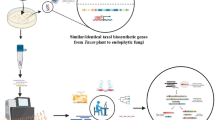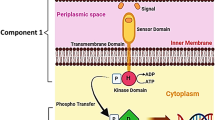Abstract
Carbon catabolite repression (CCR) is a common regulatory mechanism used by microorganisms to prioritize use of a preferred carbon source (usually glucose). The CreC WD40-repeat protein is a major component of the CCR pathway in Aspergillus nidulans. To clarify the function of the CreC ortholog from Magnaporthe oryzae in regulating gene expression important for pathogenesis, MoCreC was identified and genetically characterized. The vegetative growth rate of the MoCreC deletion mutant on various carbon sources was reduced. The MoCreC mutant produced fewer conidia and with about 60% of conidia having septation defects. Appressorium formation was impaired in the MoCreC mutant. Although some appressoria of the mutant could penetrate the leaf surface successfully, the efficiency of penetration and invasive growth of infection hyphae was reduced, resulting in attenuated virulence toward host plants. The CCR was defective as the mutant was more sensitive to allyl alcohol in the presence of glucose, and 2-deoxyglucose was unable to fully repress utilization of secondary carbon sources. qRT-PCR results indicated that the genes encoding cell wall degradation enzymes, such as β-glucosidase, feruloyl esterase and exoglucanase, were upregulated in MoCreC mutant. Taken together, we conclude that MoCreC is a major regulator of CCR and plays significant roles in regulating growth, conidiation, and pathogenicity of M. oryzae.












Similar content being viewed by others
References
Alam MA, Kamlangdee N, Kelly JM (2016) The CreB deubiquitinating enzyme does not directly target the CreA repressor protein in Aspergillus nidulans. Curr Genet. doi:10.1007/s00294-016-0643-x. [Epub ahead of print]
Arst HN Jr, Cove DJ (1973) Nitrogen metabolite repression in Aspergillus nidulans. Mol Gen Genet 126(2):111–141
Boase AN, Kelly MJ (2004) A role for creD, a carbon catabolite repression gene from Aspergillus nidulans, in ubiquitination. Mol Microbiol 53(3):929–940
Bonman MJ, Mackill D (1988) Durable resistance to rice blast disease. Oryza 25(2):103–110
Cubero B, Gómez D, Scazzocchio C (2000) Metabolite repression and inducer exclusion in the proline utilization gene cluster of Aspergillus nidulans. J Bacteriol 182(1):233–235
Dean AR (1997) Signal pathways and appressorium morphogenesis. Annu Rev Phytopathol 35(1):211–234
Ebbole DJ (2007) Magnaporthe as a model for understanding host-pathogen interactions. Annu Rev Phytopathol 45:437–456
Fernandez J, Wright JD, Hartline D, Quispe CF, Madayiputhiya N, Wilson RA (2012) Principles of carbon catabolite repression in the rice blast fungus: Tps1, Nmr1-3, and a MATE–Family Pump regulate glucose metabolism during Infection. PLoS Genet 8(5):e1002673
Fleck CB, Brock M (2010) Aspergillus fumigatus catalytic glucokinase and hexokinase: expression analysis and importance for germination, growth, and conidiation. Eukaryot Cell 9(7):1120–1135
Howard RJ, Ferrari MA, Roach DH, Money NP (1991) Penetration of hard substrates by a fungus employing enormous turgor pressures. Proc Natl Acad Sci USA 88(24):11281–11284
Hynes M, Kelly JM (1977) Pleiotropic mutants of Aspergillus nidulans altered in carbon metabolism. Mol Gene Genet 150(2):193–204
Jonkers W, Rep M (2009) Mutation of CRE1 in Fusarium oxysporum reverts the pathogenicity defects of the FRP1 deletion mutant. Mol Microbiol 74(5):1100–1113
Katoh HK, Ohtani HY, Akimitsu K (2007) Overexpression of a gene encoding a catabolite repression element in Alternaria citri causes severe symptoms of black rot in citrus fruit. Phytopathology 97(5):557–563
Katz ME, Bernardo SM, Cheetham BF (2008) The interaction of induction, repression and starvation in the regulation of extracellular proteases in Aspergillus nidulans: evidence for a role for CreA in the response to carbon starvation. Curr Genet 54:47–55. doi:10.1007/s00294-008-0198-6
Kelly JM (1980) Pleiotropic mutants of Aspergillus nidulans affected in carbon metabolism, La Trobe University
Kelly JM, Hynes M (1977) Increased and decreased sensitivity to carbon catabolite repression of enzymes of acetate metabolism in mutants of Aspergillus nidulans. Mol Gene Genet 156(1):87–92
Kim S, Ahn IP, Rho HS, Lee YH (2005) MHP1, a Magnaporthe grisea hydrophobin gene, is required for fungal development and plant colonization. Mol Microbiol 57(5):1224–1237
Kumar S, Ramón D (1996) Purification and regulation of the synthesis of a β-xylosidase from Aspergillus nidulans. FEMS Microbiol Lett 135(2–3):287–293
Livak KJ, Schmittgen TD (2001) Analysis of relative gene expression data using real-time quantitative PCR and the \(2^{{ - \Delta \Delta {\text{C}}_{\text{T}} }}\) method. Methods 25(4): 402–408
Lockington RA, Kelly JM (2002) The WD40-repeat protein CreC interacts with and stabilizes the deubiquitinating enzyme CreB in vivo in Aspergillus nidulans. Mol Microbiol 43(5):1173–1182
Margolles-Clark E, Ihnen M, Penttilä M (1997) Expression patterns of ten hemicellulase genes of the filamentous fungus Trichoderma reesei on various carbon sources. J Biotech 57(1):167–179
Nadal M, Garcia-Pedrajas MD, Gold SE (2010) The snf1 gene of Ustilago maydis acts as a dual regulator of cell wall degrading enzymes. Phytopathology 100(12):1364–1372
Nehlin JO, Ronne H (1990) Yeast MIG1 repressor is related to the mammalian early growth response and Wilms’ tumour finger proteins. EMBO J 9(9):2891
Ospina-Giraldo MD, Mullins E, Kang S (2003) Loss of function of the Fusarium oxysporum SNF1 gene reduces virulence on cabbage and Arabidopsis. Curr Genet 44(1):49–57
Portnoy T, Margeot A, Linke R, Atanasova L, Fekete E, Sándor E, Hartl L, Karaffa L, Druzhinina IS, Seiboth B (2011) The CRE1 carbon catabolite repressor of the fungus Trichoderma reesei: a master regulator of carbon assimilation. BMC Genom 12(1):269
Reymond-Cotton P, Fraissinet-Tachet L, Fèvre M (1996) Expression of the Sclerotinia sclerotiorum polygalacturonase pg1 gene: possible involvement of CREA in glucose catabolite repression. Curr Genet 30(3):240–245
Ries LN, Beattie SR, Espeso EA, Cramer RA, Goldman GH (2016) Diverse regulation of the CreA carbon catabolite repressor in Aspergillus nidulans. Genetics 203(1):335–352
Sambrook JF, Russell DW (2001) Molecular cloning: a laboratory manual, 3rd edtion. Cold Spring Harbor Laboratory, Cold Spring, New York
Sweigard JA, Carroll AM, KangS Farrall L, Chumley FG, Valent B (1995) Identification, cloning, and characterization of PWL2, a gene for host species specificity in the rice blast fungus. Plant Cell 7(8):1221–1233
Tamayo EN, Villanueva A, Hasper AA, Graaff LH, Ramón D, Orejas M (2008) CreA mediates repression of the regulatory gene xlnR which controls the production of xylanolytic enzymes in Aspergillus nidulans. Fungal Genet Biol 45(6):984–993
Todd R, Lockington R, Kelly J (2000) The Aspergillus nidulans creC gene involved in carbon catabolite repression encodes a WD40 repeat protein. Mol Gene Genet 263(4):561–570
Tonukari NJ, Scott-Craig JS, Waltonb JD (2000) The Cochliobolus carbonum SNF1 gene is required for cell wall–degrading enzyme expression and virulence on maize. Plant Cell 12(2):237–247
Tzima AK, Paplomatas EJ, Rauyaree P, Ospina-Giraldo MD, Kang S (2011) VdSNF1, the sucrose nonfermenting protein kinase gene of Verticillium dahliae, is required for virulence and expression of genes involved in cell-wall degradation. Mol Plant Microbe Interact 24(1):129–142
Valent B (1990) Rice blast as a model system for plant pathology. Phytopathology 80(1):33–36
Wang Y, He D, Chu Y, Zuo YS, Xu XW, Chen XL, Zhao WS, Zhang Y, Yang J, Peng YL (2016) MoCps1 is important for conidiation, conidial morphology and virulence in Magnaporthe oryzae. Curr Genet 62:861–871. doi:10.1007/s00294-016-0593-3
Wick AN, Drury DR, Nakada HI, Wolfe JB (1957) Localization of the primary metabolic block produced by 2-deoxyglucose. J Biol Chem 224(2):963–969
Wilson RA, Gibson RP, Quispe CF, Littlechild JA, Talbot NJ (2010) An NADPH-dependent genetic switch regulates plant infection by the rice blast fungus. Proc Natl Acad Sci 107(50):21902–21907
Xu MJ, Yang ZL, Liang ZZ, Zhou SN (2009) Construction of a Monascus purpureus mutant showing lower citrinin and higher pigment production by replacement of ctnA with pks1 without using vector and resistance gene. J Agric Food Chem 57(20):9764–9768
Yang J, Zhao X, Sun J, Kang Z, Ding S, Xu JR, Peng YL (2010) A novel protein Com1 is required for normal conidium morphology and full virulence in Magnaporthe oryzae. Mol Plant Microbe Interact 23(1):112–123
Acknowledgements
The authors gratefully acknowledge NSFC Grant (31571943) for the financial support.
Author information
Authors and Affiliations
Corresponding author
Additional information
Communicated by M. Kupiec.
Rights and permissions
About this article
Cite this article
Matar, K.A.O., Chen, X., Chen, D. et al. WD40-repeat protein MoCreC is essential for carbon repression and is involved in conidiation, growth and pathogenicity of Magnaporthe oryzae . Curr Genet 63, 685–696 (2017). https://doi.org/10.1007/s00294-016-0668-1
Received:
Revised:
Accepted:
Published:
Issue Date:
DOI: https://doi.org/10.1007/s00294-016-0668-1




